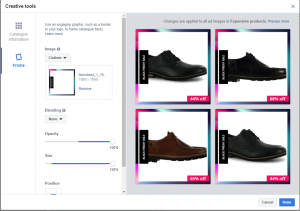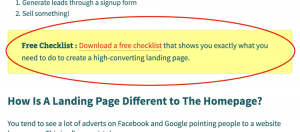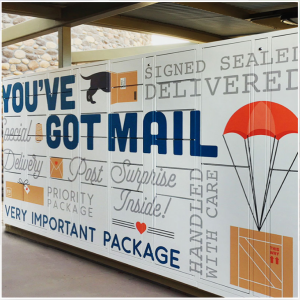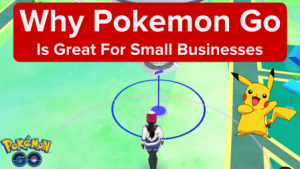— January 30, 2018
Starting a small business is a monumental task. It seems like there are a million things you have to take care of before you can make your first dollar. You need to register your business, set up your website, work out your budget, figure out your marketing plan, test your products, and establish good relationships with your manufacturers and suppliers.
You also need to create your business plan and your business model. So much to do.
You know what a business plan is. It’s your step-by-step guide on how your business will achieve its objectives. What you might not fully understand is you business model.
A business model is simply a design for the successful operation of a business. It’s how you create value for yourself (e.g. make money) while delivering products or services to your customers.
There are numerous types of business models, and they can all be mapped onto physical chart called the “business model canvas”.
The business model canvas and was developed by Alex Osterwalder, and if you don’t have a business model canvas it’s a great tool to use to improve the focus and clarity of what your business is trying to achieve.
It eliminates all of the fluff from the traditional business plan and lets you zero in on what’s important.
The Business Model Canvas Explained

The business model canvas is broken into nine building blocks for your customers. We’ll break down each of those segments so you can get a better understanding of what each of them means for your company.
#1 – Value Propositions
The first section is about your value proposition. Your value proposition is what your company is making and who they’re making it for. It’s not about your specific idea or product, it’s about solving a problem or filling a need. It’s also about who you are solving that problem for.
Once you know what problem your solving and who you’re solving it for, you can get into what exactly your product or service is. This is where you list all the benefits and features of your product and what they do to solve the problem.
#2 – Customer Segments
Perhaps the most important part of your canvas is the customer segments. If you don’t know who your business is catering to you’ll never be able to sell to them. You need to figure out who your customers are and why they would buy from you. You want to get very specific and figure out where your customer lives, what their social habits are, how old they are, if they’re male or female, etc. You want to be so detailed that you could draw a picture of your customer, put it on a wall, and have it detail their exact persona. On day one this is nothing but a hypothesis, but as you start testing and selling your products, you will be able to change this accordingly.
#3 – Channels
Your channels are what you use to deliver your product from your company to your customer. In the old days you really only had one channel and that was the physical channel. You had a storefront and your goal was to get people to visit your store.
With the rise of technology, a storefront is no longer necessary. Now many people use the internet and mobile devices as their channels. Even if you have a physical channel setup, you’re most likely still going to have a web presence. You need to decide which outlet or outlets are best for you to get your product to the customer.
#4 – Customer Relationships

Your customer relationships are the fourth piece in your business model canvas. This section is about how you get your customers, how you keep your customers, and how you grow your customer. The channel you choose to distribute your product will also help determine your customer relationships.
A physical store will acquire its customers differently than an online store. If you’re using a website as your main channel, you need to figure out how to get them to your website, how to get them to buy once they are there, and how to get them to hang around and buy more of your products. Just like previous steps this is only a hypothesis on day one and will be figured out as your business grows.
#5 – Revenue Streams
Your revenue streams are how you will actually make your money from your value proposition. What value is your customer paying for and how are you going to capture that value?
Depending on your company it could be a direct sales model, a freemium model, a subscription model, or a licensing model. Again, the model you choose depends on your business, and your business could use multiple revenue models. Your revenue streams aren’t about the actual pricing of your product, it’s just your way of capturing revenue.
#6 – Resources
The next section of your business model canvas deals with is your resources. This is what you need to sell your product, the assets that are required for you to be successful.
The most important resource for many new companies is financing. Do you have enough cash on hand to fund your business? WIll you need funding or a line of credit? There are also physical needs like a store, manufacturing plant, or delivery trucks. You might need intellectual properties as patents and customer lists. You might also need a good, strong workforce of salesmen, programmers and manufacturers.
#7 – Key Partners
Your key partners are the people and companies who are going to help you grow your business. There are some things you aren’t going to be able to do and some you just won’t want to do on your own, so you’ll want to partner with people that can do them for you. Two of the most common partnerships are suppliers and buyers.
The two main questions you need to ask yourself before forming a partnership is what you’re going to get from them and what activities they are going to perform. If you have a one man startup, your partnerships will likely be different than the partnerships a larger company has.
In your first year you might choose to do everything yourself just to save money. As your business grows, you will be able to invest in partnerships that can save you time and help grow profits.
#8 – Key Activities

Your key activities are the most important things your business must do to make your business model work. If you’re in the production business you’ll be making products. Maybe you’re a consultant and you’re in the business of solving problems. You could also be in sales and be responsible for getting people to buy various products.
Whatever it is that your business does, your key activities are what you need to become an expert in for your business to be successful.
#9 – Cost Structure
Your cost structure is what it’s going to cost you to keep the business running. You have to think beyond the obvious costs like your payroll, rent, and materials and be sure you are including everything.
You need to know what the most important costs are, what your most expensive resources are, and how much your activities and partnerships cost. Then you will need to ask the typical accounting questions like what your fixed and variable costs are, and any economies of scale. Anything that is going to cost you money to keep your business operational needs to be included here.
The Lean Business Model Canvas
Something that has become increasingly popular over the last few years is the “lean business” or “lean startup.” The lean business is essentially a business method that gets you from idea to business as fast as possible.
In a lean business you put out what is called your “minimum viable product”. This is your product in its most basic form with none of the extra bells and whistles. You put that product out to a select group of people to see if they like it. If they like it you can move on with that product, if they don’t you either pivot or scrap the idea all together.
The lean model allows you to get to market as fast and as cheaply as possible. The lean business model canvas was made in the spirit of the lean business. It’s more actionable and entrepreneur based and focuses on the way time can affect the revenue stream of a business. When the lean business model canvas was created, four more elements were added.
#1 – Problem
A problem box was created because many businesses spend a lot of time and money on a product that isn’t needed or doesn’t solve a problem. It’s important to know what problem you are solving before you do anything else.
#2 – Solution
Once you know what problem you are solving, it’s time to work on your solution. This is where you would describe your MVP (minimum viable product).
#3 – Key Metrics
Your key metrics are the range of products or services you want to provide. It is key to choose the right metrics because choosing wrong could lead to disaster for your business.
#4 – Unfair Advantage
Your unfair advantage is just that – any unfair advantage you might have over your competitors. It is very important to know if you have any unfair advantages over your competitors, or if they have any over you.
To truly make it the “lean” canvas, they had to remove the elements they didn’t think were necessary. They removed:
- Key activities
- Key resources
- Key partnerships
- Customer relationships.
They were removed because they were either a waste of time to a lean startup, covered in another element, or they were more outside focused and not focused directly on the business.
Conclusion

Whether you’re an established business or just getting started, a business model canvas is an amazing tool to help you reach your goals. It provides you with a one page document that cuts out the fluff lays everything out right in front of you. It’s easily editable so as your business changes you can change your canvas to match. And if you’re creating a lean startup, there is a business model canvas made just for you.
Business & Finance Articles on Business 2 Community
(57)






